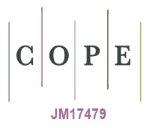Occupational Radiation Exposure to Workers Used18F-FDG
DOI:
https://doi.org/10.23851/mjs.v29i4.489Abstract
The increasing interest of medical institutes in the development of imaging services to include the hybrid system [Positron Emission Tomography combined with Computed Tomography(PET/CT)], this system is acquiring explosive growth due to its ability to accurately detect and stage many types of cancer and follow the progress of treatments. An increasing demand for use of (18F-FDG PET) in oncology has been the main reason for its growth. The physical characteristics of positron emissions result in higher radiation risk for staff and growing use of PET/CT for diagnostic purposes increase radiation exposure. The objective of this study was to estimate the radiation exposure to the medical physicists, technicians and nurses working in three Egyptian nuclear medicine institutes under our investigations, based on the whole body collective dose measured by thermoluminescent dosimeters (TLDs) and the effective dose per study received by medical staff were measured by electronic pocked dosimeters and the finger doses by ring dosimeter during a period of six months. The (mean± SD) dose measured per PET/CT procedure were (2.45±0.137, 3.22±0.218 and 1.69±0.11) μSv for the medical physicist, technician and nurse respectively. The (mean± SD) dose measured per MBq of 18F-FDG were (7.35±0.43, 9.73±0.66 and 5.13±0.33) nSv/MBq for the medical physicist, technician and nurse respectively. The (mean± SD) finger dose measured per 18F-FDGPET/CT scans were (179.9±24.94, 8.82±2.912 and 24.15±4.164) μSv for the medical physicist, technician and nurse respectively.Downloads
References
Dalianis, K., et al. "Dosimetric evaluation of the staff working in a PET/CT department." Nuclear instruments and Methods in Physics Research Section A: Accelerators, Spectrometers, Detectors and Associated Equipment 569.2 (2006): 548-550.
Townsend DW, Carney JPJ, Yap JT, et al: PET/CT today and tomorrow. J Nucl Med 45:4S-14S, 2004.
Charron M, Beyer T, Bohnen NN, et al: Imaging analysis in patients
with cancer studied with a combined PET and CT scanner. ClinNucl
Med 25:905-910, 2000
Wahl RL: Why nearly all PET of abdominal and pelvic cancers will be
performed at PET/CT. J Nucl Med 45:82S-95S, 2004
Bixler A, Springer G, Lovas R: Practical aspects of radiation safety for using fluorine 18. J Nucl Med Technol 27:14-16, 1999.
Chiesa C , De Sanctis V , Crippa F , et al. Radiation dose to technicians per nuclear medicine procedure: comparison between technetium-99m, gallium-67, and iodine-131 radiotracers and fluorine-18 fluorodeoxyglucose. Eur J Nucl Med. 1997 Nov;24(11):1380-9.
Roberts F.O, Gunawardana D.H, Pathmaraj K, et al. Radiation dose to PET technologists and strategies to lower occupational exposure. J Nucl Med Technol 2005; 33:44-47.
Demir, Mustafa, et al. "Radiation doses to technologists working with 18F-FDG in a PET center with high patient capacity." Nukleonika 55 (2010): 107-112.
Amaral A, Itie C, Bok B, Dose Absorbed by Technicians in Positron Emission Tomography Procedures with FDG, Brazilian Archives of Biology and Technology 50: pp.129-134, Semptember 2007.
Wu, T.H., Liu, R.S., Chong, N.S., et al (2000), Evaluation of equivalent dose to work staff with Oxygen-15-watrer in positron emission tomography
studies. ApplRadiatIsotop, 53, 463-468.
Schleipman A.R., Castronovo, F.P. Jr, Di Carli, M.F., Dorbala, S. (2006), Occupational radiation dose associated with Rb-82 myocardial perfusion positron emission tomography imaging, J NuclCardiol, 13 (3), 378-384.
Seierstad, T., Stranden, E., Bjering, K., Evensen, M., Holt1, A., Michalsen, H. M., Wetteland, O. (2007), Doses to nuclear technicians in a dedicated PET/CT centreutilising 18F fluorodeoxyglucose (FDG), RadiatProtDosim, 123 (2), 246-249.
Brown TF ,Yasillo NJ. Franklin Mclean. Radiation safety considerations for PET centers. J Nucl Med Technol. 1997 Jun;25(2):98-102.
Protection, R. (2007). ICRP publication 103. Ann. ICRP, 37(2.4), 2.
H.M. Yassin , M. S. El-Nagdy , A. Wabdan; Radiation Protection and Dosimetry for worker used 18F-FDG,EJNM & MI (2017)44(Suppl. 2):S452-453.
Downloads
Key Dates
Published
Issue
Section
License
(Starting May 5, 2024) Authors retain copyright and grant the journal right of first publication with the work simultaneously licensed under a Creative Commons Attribution (CC-BY) 4.0 License that allows others to share the work with an acknowledgement of the work’s authorship and initial publication in this journal.






















